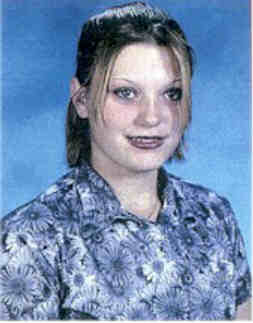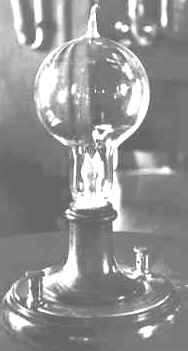 Deaths
which occurred on an October 21:
Deaths
which occurred on an October 21:
2002 Osnat Abramov, 16, of Holon; Indelou Ashati, 54, of Hadera;
St.-Sgt. Liat Ben-Ami, 20, of Haifa; Ofra Burger, 56, of Hod Hasharon;
Cpl. Ilona Hanukayev, 20, of Hadera; Suad Jaber, 23, of Taibe; Iris Lavi,
68, of Netanya; Sgt.-Maj.(res.) Eliezer Moskovitch, 40, of Petah Tikva;
St.-Sgt. Nir Nahum, 20, of Carmiel; Sgt. Esther Pesachov, 19, of Givat
Olga; St.-Sgt. Aiman Sharuf, 20, of Ussfiyeh; Sergei Shavchuk, 35, of
Afula; Anat Shimshon, 33, of Ra'anana; Cpl. Sharon Tubol, 19, of Arad;
and 2 suicide bombers of al-Quds Brigades (military branch of
Islamic Jihad), who, at 16:23, detonate a jeep, loaded with more than
100 kg of explosives, next to the rear of a stopped No. 841 Egged bus
(Kiryat Shmona to Tel Aviv) which is engulfed in fire [photo >],
on Road 65 a few kilometers east of Hadera, Israel. One of the dead is
a woman who died a few hours after being injured in the explosion. Some
40 other persons are injured. The attack was probably planned by Ayad
Tzwalcha, a senior Islamic Jihad member from the Jenin area, who is wanted
by Israel. Tzwalcha is an explosives expert and leader of the network
responsible for several attacks — among them the suicide attack at
the Megiddo Junction in June 2002 , in which a car bomb also was detonated
next to a bus. In early September 2002, Tzwalcha tried to smuggle a car
carrying hundreds of kilograms of explosives from the Jenin area into
Wadi Ara, but a Border Police patrol discovered the vehicle and prevented
the attack. The al-Aqsa intifada body count is now “at least”
1626 Palestinians and 611 Israelis, including 292 persons — not including
the bombers — in 79 suicide attacks .
2001 Thomas L. Morris Jr., 55, of respiratory anthrax,
at about 21:00 in Greater Southeast Community Hospital in Washington DC,
where he had come at 05:55 for treatment of severe flu-like symptoms.
He was a postal worker at the Brentwood facility serving the Washington
DC area, through which had passed a letter containing anthrax spores that
was opened on 15 October 2001 in Senate Majority Leader Thomas A. Daschle
(D-S.D.) and led the House of Representatives to an unprecedented closing-down
from 17 to 23 October 2001 (while the Senate bravely continued work).
The blowers the postal system uses to clear the dust from its automatic
sorting machines are suspected of spreading the spores.
2001 Five persons including a 9-month-old boy, by a bomb
hidden inside a hot dog cart exploding into an apartment building where
several police families lived, in Peñol, Colombia, 200 km northwest
of Bogotá. Police say it is the doing of the National Liberation
Army.
2001 Four brothers, aged 5 to 9, in Colombia's La Guajira
province, as FARC rebels bomb a gas pipeline. 11 other persons are injured.
2001 Four men and a woman dragged from their car, then
shot by FARC rebels in Colombia's province of Valle del Cauca.
2001 Mohammed al-Barakia, 30, Palestinians shot in the
neck by Israeli forces near Bethlehem. Another two Palestinians
are killed and 10 wounded in the Al Aida refugee camp, near Bethlehem.
2001 Ahmed Abu Mandeel, 15, Palestinian from al Maghazi
camp, in a Tel Aviv hospital, from having been shot in the chest by Israeli
soldiers in the Gaza Strip on 29 September 2001.
 1999
Russian attack on Grozny market claims 'scores' of lives (CNN)
1999
Russian attack on Grozny market claims 'scores' of lives (CNN)
1997 Maryann Measles, 13 [< photo],
murdered after been abducted from her mother's car parked in the parking
lot of a shopping center on Route 7, New Milford, Connecticut, while her
mother was away from 17:45 to 17:55 buying groceries at the Big "Y" Supermarket,
right after Maryann had told her: “They're going to kill me, Ma,
if they find me.” Maryann had recently reported to the police her
sexual relationship with a 19-year-old hard-drinking thug, and she intended
to report another one, aged 21. Both had warned the girl to keep her mouth
shut. On 15 July 1998, a passer-by would spot Maryann's remains, bound
in a blanket and wrapped in chains, floating on Lake Lillinonah (Housatonic
River) at the Rt. 133 bridge in Bridgewater, 11 km south of New Milford.
On 16 October 2002, Alan M. Walter, 24, and Deaneric Dupas, 27, would
be charged with the murder, Dupas also with rape. Jeffrey Boyette, 22,
Ronald Rajcok, 29, and one other man, Dorothy Hallas, 22, and two other
women, are charged with conspiracy to commit murder and kidnapping, witness
tampering, and various assault charges. On some of those charges the statute
of limitations is 5 years.
1966 144, mostly children, as a coal waste landslide
engulfs a school and several houses in south Wales.
1910 Twenty
persons, from explosion in the building of the anti-union
Los Angeles Times, set by union officials. Their defense attorney, Clarence
Darrow, was prosecuted and acquitted on jury-rigging charges.
1881 Eduard
Heine, mathematician.
 1879
The first successful electric
1879
The first successful electric